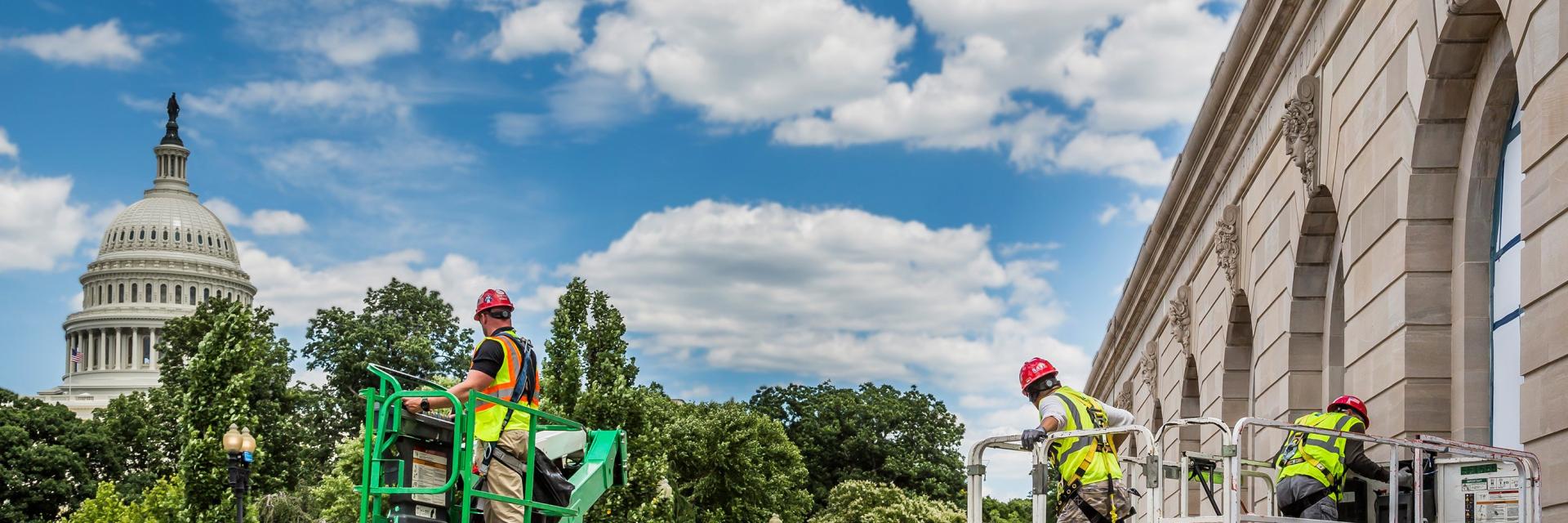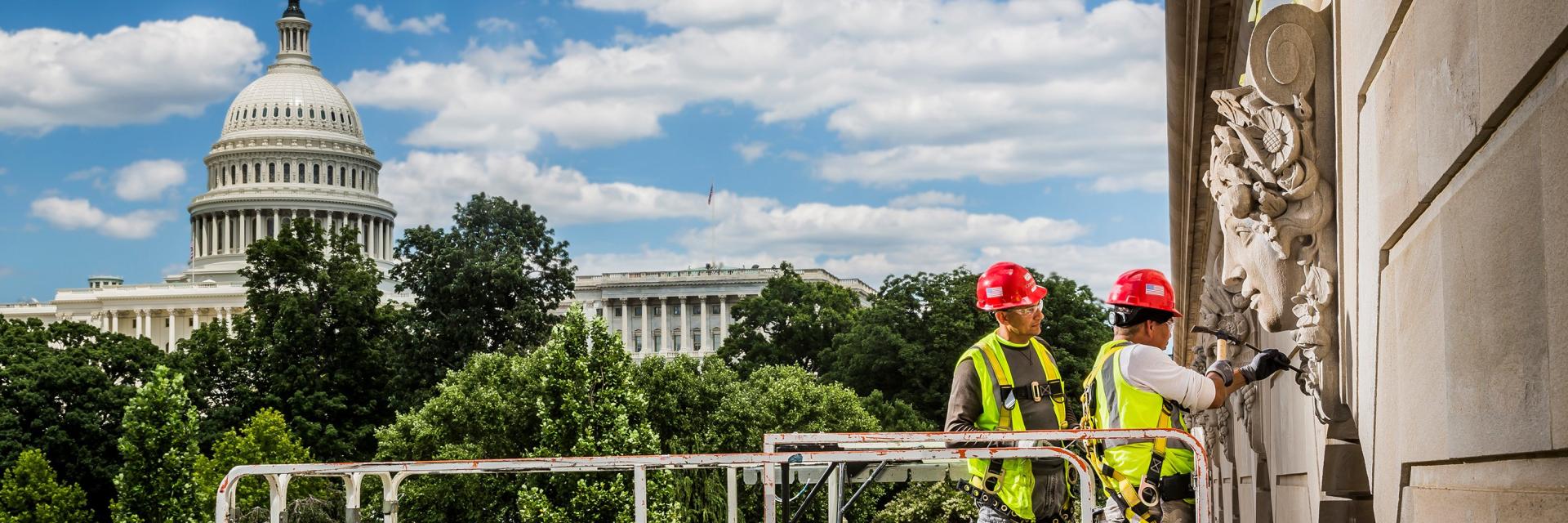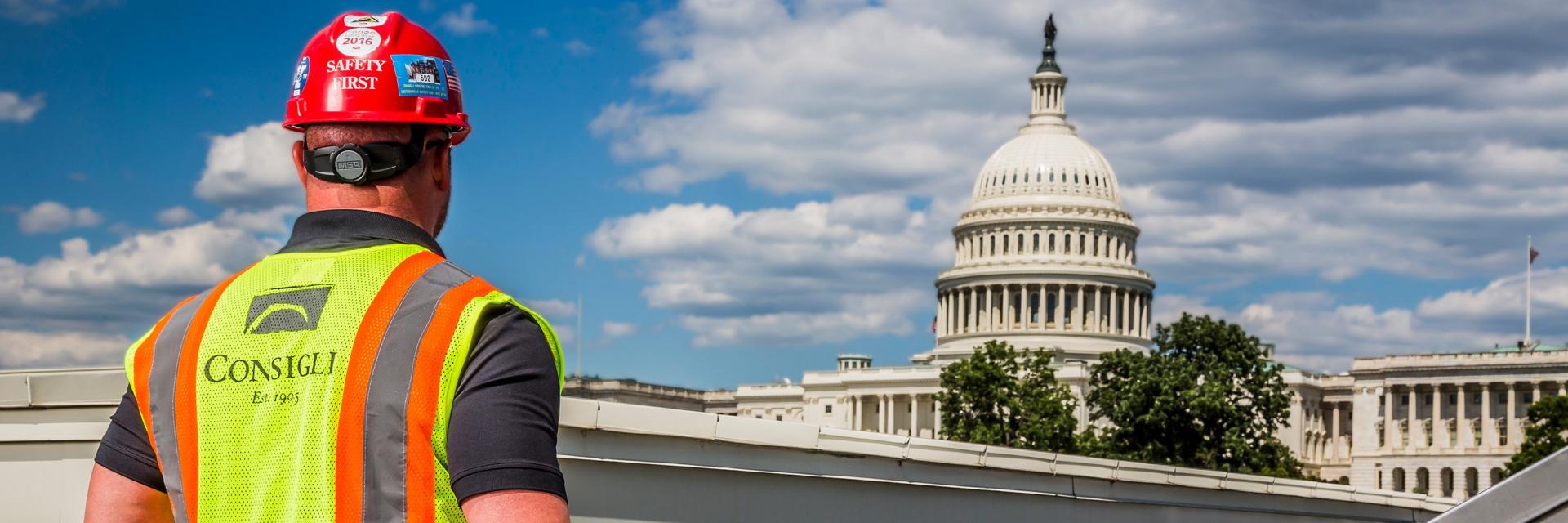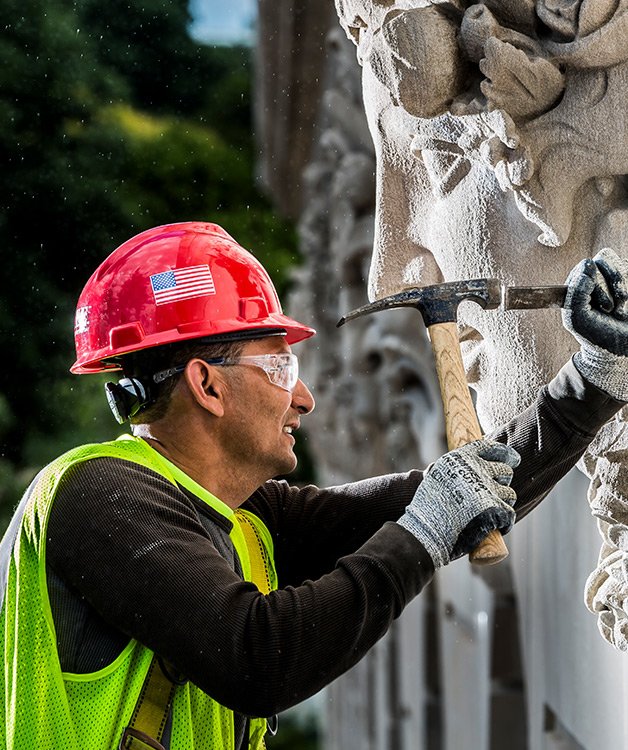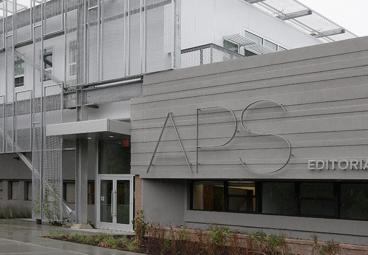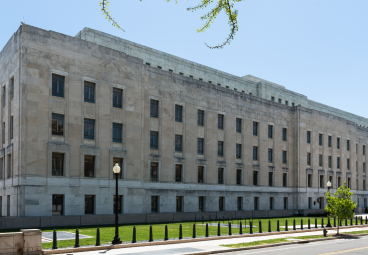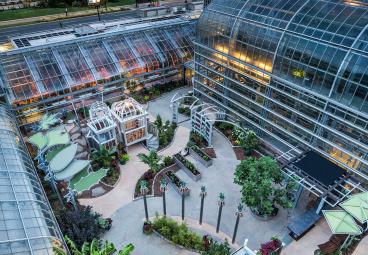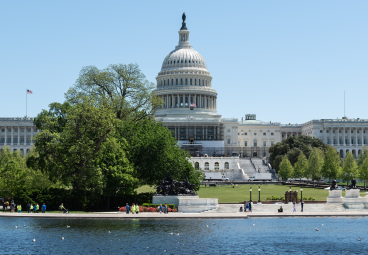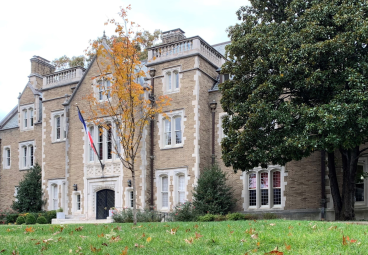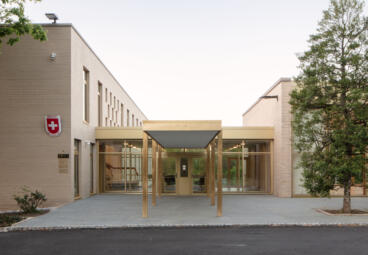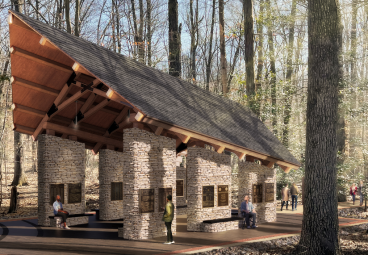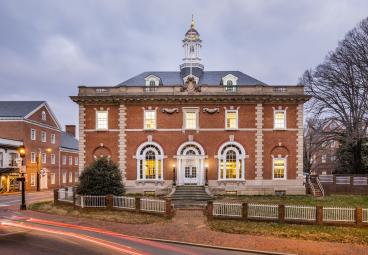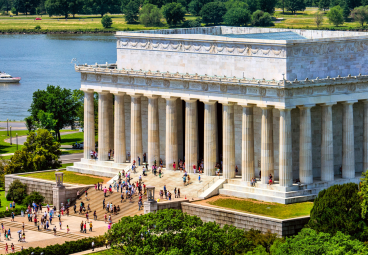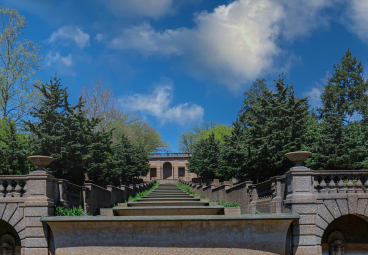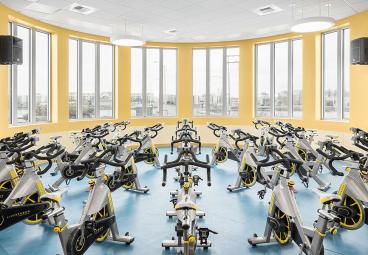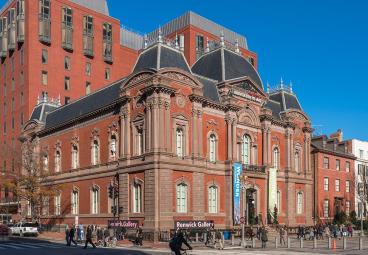Architect of the Capitol
U.S. Botanic Garden Exterior Stone Repair and Roof Replacement
Project Overview
- Managing work atop an active, historic museum with work zones located directly above endangered plant species
- Creation of an experimental rooftop garden for University of Maryland students to test the durability of green roofs
- Stone cleaning and repair using low impact, hand-cleaning techniques to preserve the integrity of the historic façade
The U.S. Botanic Garden’s historic Lord & Burnham greenhouse, originally built in 1933 and situated on the National Mall, holds 10,000 specimens and simulates twelve different plant habitats each with its own unique micro-climate. The greenhouse is undergoing renovations that will preserve the historic stone façade, while also creating a modern and sustainable vegetated roof.
The limestone façade and balustrade repairs include micro-abrasion stain removal, crack repair, Dutchman repairs, brick cutting and repointing, lead removal, cornice repairs and the addition of new stainless steel flashing. The roof work features the demolition of the existing EDPM roof down to the concrete deck, followed by the installation of a new hot asphalt-topped green roof. Concrete slab penetrations to allow proper rooftop irrigation and drainage will occur within a seven-foot interstitial space above active M/E/P systems. The finished roof will host an experimental laboratory, where testing and analysis of the durability of various plant types, growth mediums and water requirements for green roofs in the DC area will occur. The findings will be published and distributed to local DC businesses with the goal of encouraging the use of green roofs in the community.
The constrained site has minimal laydown area and limited roof loads for equipment, materials and personnel, requiring the use of lifts and complex swing staging to access the roof and elevations. Additionally, all workers and tools must be tied off to ensure nothing is dropped on pedestrians or the endangered species plants we’re working above. All work is being managed on off-hours or weekend shifts to mitigate disruptions to building occupants and neighboring, high-security buildings.

